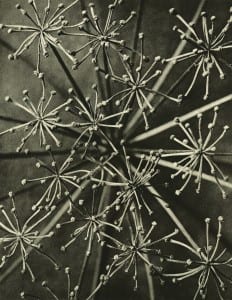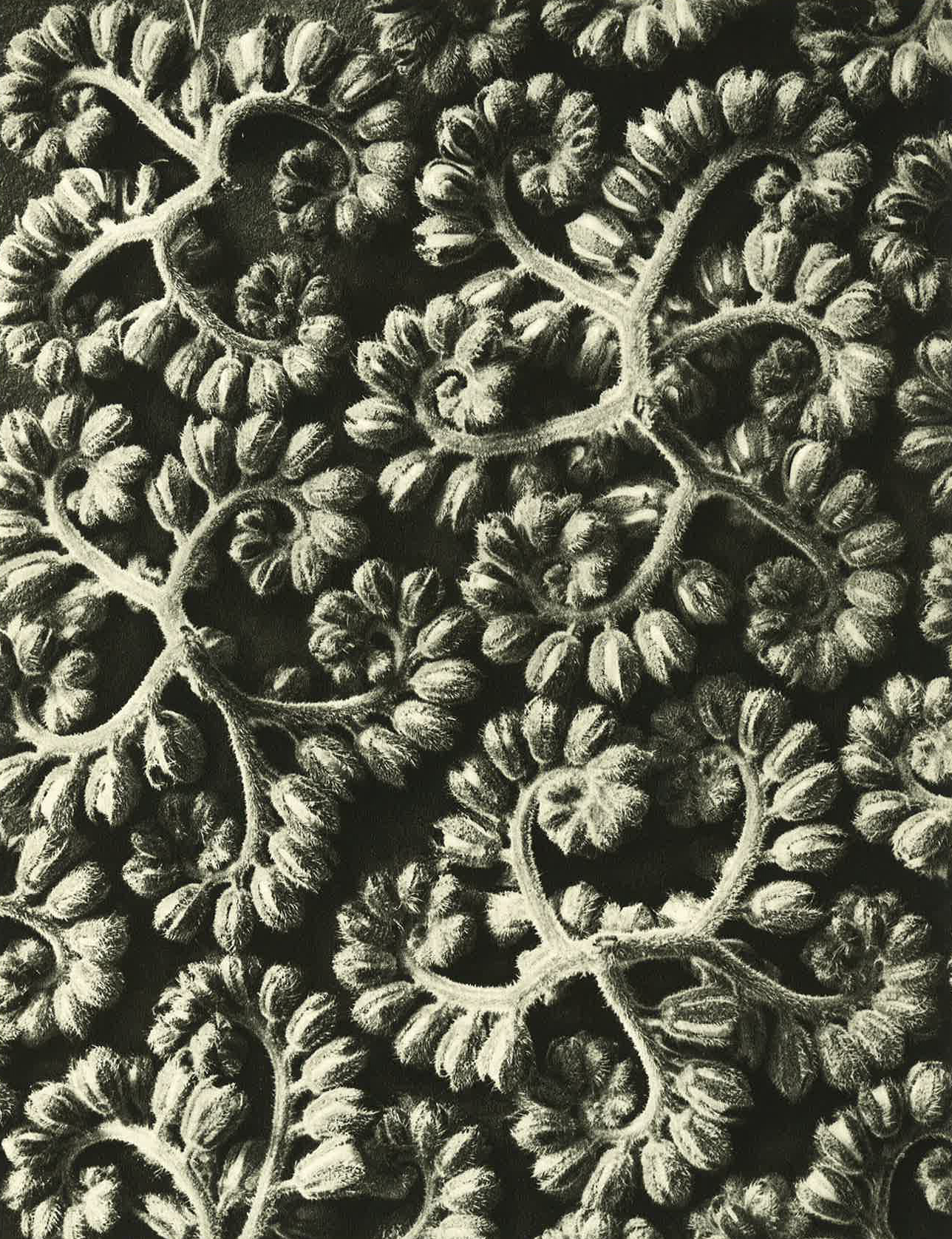Capturing Nature’s Beauty
Posted on by Fay Curtis.
Nicola Dellard-Lyle – Bristol based writer and photographer
Karl Blossfeldt’s fascination with nature and the structure behind beautiful forms led him to create a groundbreaking collection of thousands of photographs of natural forms.
How did Karl Blossfeldt create his photographs?
The method Blossfeldt used to create his images was named ‘microphotography’ because he chose to photograph his subjects incredibly closely. To do this, he needed to devise a way of capturing the shapes of the forms, whilst keeping the details of the plants.
Karl Blossfeldt was one of the first photographers to build his own unique camera, which was made of wood and had one metre long bellows. In the 1930s the photographs he produced with it were just as unique as the homemade contraption itself.
Blossfeldt chose to depict natural objects in extreme close ups. Using his homemade camera he could zoom in so close to a plant’s leaves and stem that, unlike any photographs of natural objects seen before, they became new beings entirely. He printed his images by hand in a photographic darkroom, using a time intensive process called photogravure which uses light sensitive gelatin paper, copper plates and trays of chloride chemicals. At the time Blossfeldt made his work, the size of the images was seen as adventurous – but it was necessary to show the magnificent detail of each natural form.
 Blossfeldt’s photographs reveal so much more about natural objects because of his ‘microphotographic’ techniques. His specialised cameras magnified his subjects so intensely that tiny details, which would not normally be noticed, are shown as the main focus within the frame. Small flailing hairs on plant stems and magnificently shaped structures within buds are suddenly easily scrutinised, studied and admired. Due to the detail shown in Blossfeldt’s work, his photographs have been regarded as useful scientific studies, as well as artistic works of beauty.
Blossfeldt’s photographs reveal so much more about natural objects because of his ‘microphotographic’ techniques. His specialised cameras magnified his subjects so intensely that tiny details, which would not normally be noticed, are shown as the main focus within the frame. Small flailing hairs on plant stems and magnificently shaped structures within buds are suddenly easily scrutinised, studied and admired. Due to the detail shown in Blossfeldt’s work, his photographs have been regarded as useful scientific studies, as well as artistic works of beauty.
“Not only then, in the world of art, but equally in the realm of science, Nature is our best teacher.”
Karl Blossfeldt, ‘Magic Garden of Nature’ (1932).
Tactility in Fine Art Photographic Prints
Although Karl Blossfeldt regarded himself as an amateur photographer who created scientific images and teaching tools, there is no denying his artistic eye when admiring the expert way he framed each fragment of fauna, focusing on the intense details of leaves, stamen and follicles. The focus is always on minute details and the scale of each object is obscured. Although the photographs all show small parts of a piece of wildlife, some of the plants are framed in such a way that gives the bud, leaf or stem a sense of individuality, appearing as individual plants in their own right.
We are used to seeing photographs of plants, flowers  and nature in colour – bright greens, vivid hues of red and deep purples. However, Blossfeldt’s monochrome images offer a new way of looking at beautiful natural art forms. The contrast in each image forces the black shadowy crevices and brightly lit elements of each form to stand out, so that we can see more of the plant, flower or seed than we would ever be able to see with the naked eye. We aren’t distracted by bright and beautiful florals when looking at Karl Blossfeldt’s black and white photographs. Instead, the finer points can be seen in sharp detail, which is what makes these photographs so incredible.
and nature in colour – bright greens, vivid hues of red and deep purples. However, Blossfeldt’s monochrome images offer a new way of looking at beautiful natural art forms. The contrast in each image forces the black shadowy crevices and brightly lit elements of each form to stand out, so that we can see more of the plant, flower or seed than we would ever be able to see with the naked eye. We aren’t distracted by bright and beautiful florals when looking at Karl Blossfeldt’s black and white photographs. Instead, the finer points can be seen in sharp detail, which is what makes these photographs so incredible.
Karl Blossfeldt: Art Forms in Nature will be on display at Bristol Museum & Art Gallery until 13 September 2015.
Contributed by Nicola Dellard-Lyle, a writer and photographer based in Bristol. www.threadpressed.com